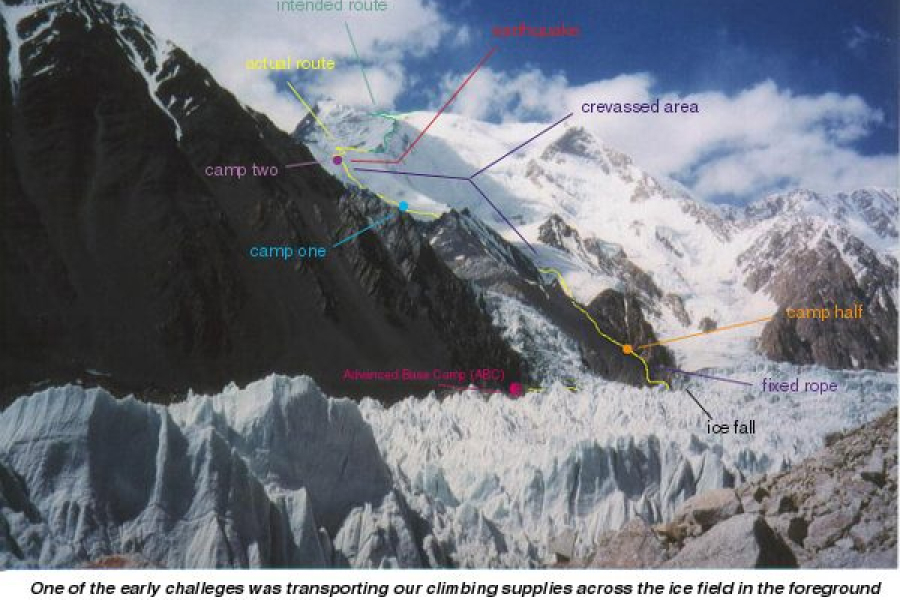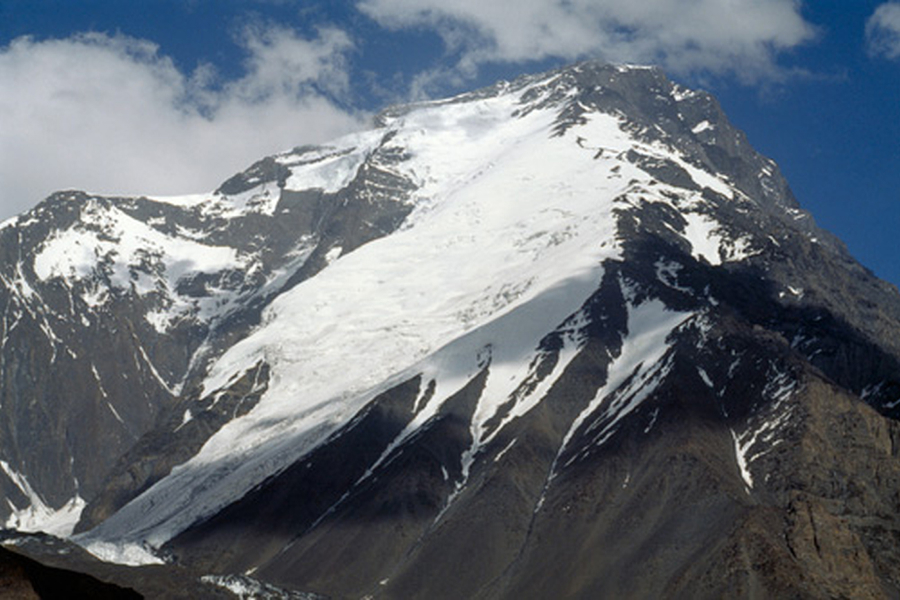Noshaq Peak 7492m Expedition
Noshaq Peak, at 7,492m, is the second-highest mountain in the Hindu Kush range. Nestled on the Afghanistan-Pakistan border, it is the highest peak in Afghanistan. This majestic mountain boasts stunning panoramic views and holds historical significance as a sought-after challenge for climbers worldwide. Its allure lies in both its formidable elevation and the diverse experiences it offers to those daring enough to ascend its slopes.
Location:
Noshaq Peak commands attention as the second-highest mountain in the Hindu Kush range, on the rugged Afghanistan-Pakistan border north of Tirich Mir. Its strategic location offers climbers a formidable ascent and unrivaled vistas of the surrounding high-altitude landscapes. The peak's proximity to other notable summits adds to the allure of this challenging yet captivating mountaineering destination. Noshaq's geographical prominence extends beyond its impressive elevation, making it a beacon for adventurers seeking physical and visual feats in the heart of the Hindu Kush.
Routes:
Noshaq Peak boasts a variety of challenging climbing routes, with the West Ridge Normal Route being the most popular, known for its non-technical ascent. In 1960, a Japanese expedition navigated a circuitous route via the South Ridge to reach Noshaq's West Summit. Another notable expedition in 1971, led by Wolfgang Stefan's Austrian team, tackled the South Ridge from Upper Tirich Glacier, overcoming challenges such as an earthquake. These routes offer diverse climbing experiences and showcase the unpredictable yet captivating nature of Noshaq's ascent, contributing to its rich mountaineering history.
Weather Conditions:
Noshaq Peak, standing tall in the Hindu Kush range, experiences diverse and challenging weather conditions that significantly impact climbing endeavors.
Climbing Seasons:
The primary climbing seasons are typically during the summer months of June and July when the weather is milder. However, even in these months, unpredictable weather patterns prevail, including sudden storms and snowfall, posing additional hazards.
Temperature Extremes:
Temperatures at the summit can plummet well below freezing, emphasizing the need for climbers to be equipped with proper cold-weather gear. Strong winds are also common, adding to the challenge of navigating Noshaq's slopes.
High-Altitude Challenges:
At its formidable height of 7,492m, Noshaq is subject to extreme temperatures, with frigid conditions even during the climbing season. As climbers ascend, they encounter decreasing temperatures and reduced oxygen levels, intensifying the physical demands of the ascent.
Climbing History:
First Ascent in 1960:
The initial ascent occurred in 1960 when a Japanese expedition, led by Goro Iwatsubo and Toshiaki Sakai, took a circuitous route from [location], reaching the Southwest pass and ascending the South Ridge.
Climbing Attempt in 1971:
Wolfgang Stefan's Austrian expedition in July 1971 climbed Noshaq via the South Ridge from [location]'s Upper Tirich Glacier, following a challenging route with camps at strategic altitudes. The expedition faced an earthquake, adding to the challenges, and ultimately retreated from around 6,500m due to the difficulties ahead.
Climbing Attempts in 2000:
In June and July of 2000, a multinational team, including Jamie McGuinness, Murray Macpherson, and Martin Nielson, embarked on a significant expedition to Noshaq. It is one of the first serious attempts on the peak since 1978.
Historical Ascents:
Noshaq Peak, with around 32 ascents up to 1998, witnessed numerous expeditions before the Russian invasion. It was the first 7,000m peak to achieve a winter ascent.
Tour detail for 40 days:
NOSHAQ PEAK EXPEDITION
7492M
40 days, Ex-Islamabad, Non-guided climbs
ITINERARY
Note:- Although we try to adhere to the schedule listed below, this itinerary is subject to change due to numerous reasons beyond our control such as bad weather, cancelled or delayed flights, road washouts, vehicle breakdowns, accidents, sickness, govt. restrictions, & all other unforeseen exigencies.
DAY 01 Day 02 ARRIVAL RAWALPINDI / ISLAMABAD
Upon arrival met and transfer to your hotel in Rawalpindi. After a short rest drive to Islamabad, Ministry of Tourism to complete the necessary formalities and obtain climbing permit.
DAY 03 RAWALPINDI/CHITRAL
Drive to Chitral, Overnight hotel.
DAY 04 CHITRAL / rest day
Final arrangement in Chitral for the expedition.
DAY 05 CHITRAL TO SHAGRUM
Early morning at 6 AM embark by jeeps to Shagrum (7-8 hours). The last inhabitance on our way to the Base Camp. Overnight in tents. All meals served by camp staff.
DAY 06 – 10 SHAGRUM TO NOSHAQ BASE CAMP
Today we leave the last inhabited village. For the remaining portion of our journey we rely on our porters who carry our food and equipment’s and sustains our expedition. Overnight in tents All meals served by camp staff.
DAY 11 - 33 CLIMBING
23 days non-guided climb will start from today. During the climbing period our staff will be at base camp to help and assist you with supplies
DAY 34, 35, 36 TREKKING BACK TO SHAGRUM VILLAGE
After an early breakfast leave the Noshaq Peak base camp and we will trek down to Shagrom village in three days. Overnight in tents.
DAY 37 SHAGRUM TO -TO- CHITRAL
AM: Embark jeeps for a full day ride on a winding jeep trail to Chitral. Upon arrival transfer to your chosen hotel. All meals included.
DAY 38 CHITRAL - RAWALPINIDI
Early in the morning drive to Islamabad, Overnight hotel.
DAY 39 RAWALPINDI
De-briefing at Ministry of Tourism Islamabad. Evening free
DAY 40 FLY BACK HOME
Transfer to airport for your onward flight to abroad.
End of our services
Activities
Climbing Expedition




